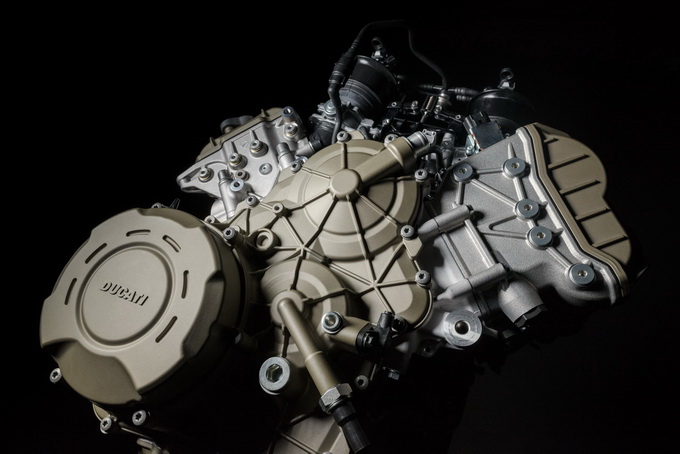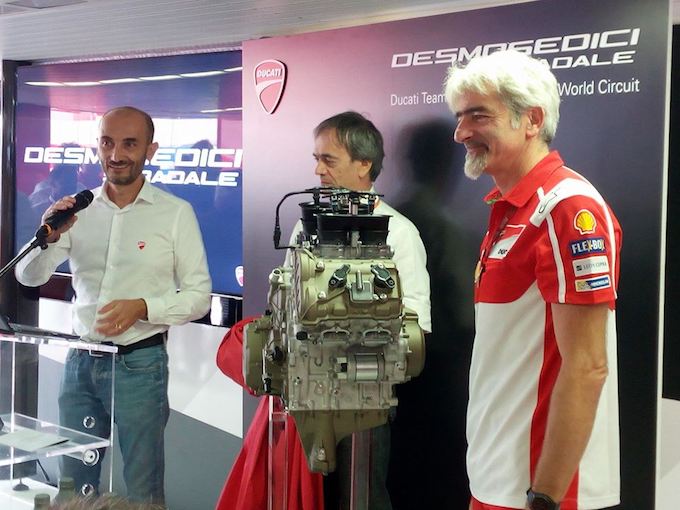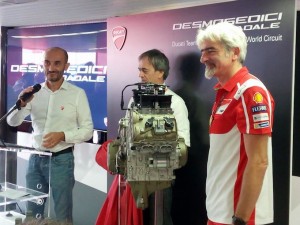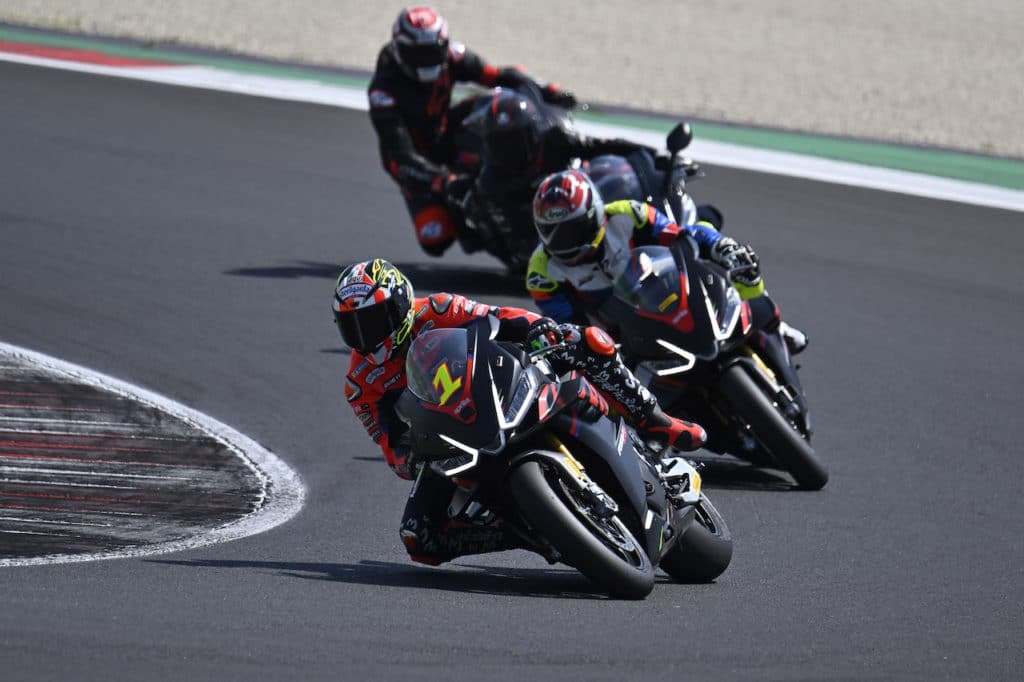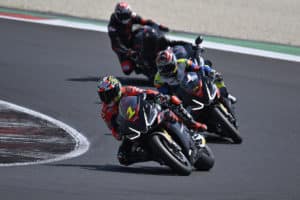Desmosedici Stradale: Ducati brings the emotions of the track to the street
The new V4 delivers a power of over 210 HP and a maximum torque of over 120 Nm
Ducati Desmosedici Stradale – From the track to the road it's a short step when it comes to Ducati and the new engine Desmosedici Stradale presented this morning in Misano is yet another proof of this. This V4 opens a new chapter in the history of the house of Borgo Panigale which, once again, looks to the future by proposing a new and distinctive project. The particular shape (at 90° rotated backwards by 42°) makes it extremely compact, allowing the masses to be centered and allowing perfect integration into the vehicle.
THEcrankshaft, as on the Ducati prototypes used in the race, is counter-rotating to reduce the gyroscopic effect of the wheels and provide easy handling and agility when changing direction. The Desmosedici Stradale is undoubtedly a ideal engine for use on the track, but its definition also took into account the needs for its satisfactory use on the road too. In fact, to maximize torque at medium speeds, so important for the enjoyment of the bike on roads open to traffic, and to obtain torque and power at lower speeds, the engine has a slightly larger displacement than the MotoGP, to be precise 1.103 cm³. It delivers a power of over 155 kW (210 HP) at 13.000 rpm, and a maximum torque of over 120 Nm (12,2 Kgm) from 8.750 to 12.250 rpm, in Euro 4 configuration. In analogy to MotoGP, the design was set by setting the piston bore at 81 mm. This value represents the maximum limit allowed by the MotoGP technical regulations; it is also the highest in the 4-cylinder super sports car segment.
The Desmosedici Stradale is designed around the Desmodromic system which controls the four valves of each cylinder and contributes to making the Ducati MotoGPs the fastest prototypes in the premier class of the MotoGP. On this high-revving engine the "Desmo" finds its maximum technical value and reaches levels of sophistication, compactness and lightness, never seen before on a Ducati.
The collaboration with Ducati Corse has made it possible to create a compact, lightweight and high-performance engine. Design and development by Ducati engineers has given it a delivery that maximizes riding pleasure on the road and absolute performance on the track. With a weight of 64,9 kg, the Desmosedici Stradale is only 2,2 kg heavier than the 1.285 cm³ Superquadro twin-cylinder, confirming the enormous attention to lightness, the fulcrum of every Ducati project.
The Desmosedici Stradale engine breathes thanks to four oval throttle bodies with an equivalent diameter of 52 mm, connected to variable height intake ducts for the first time mounted on a Ducati engine. This solution allows you to optimize the filling of the cylinders at all rotation speeds with important benefits in terms of power delivery and driveability. As the rotation speed and the torque requested by the pilot vary, the intake horns assume a configuration that lengthens or shortens the duct, allowing the influence in fluid dynamic terms of the pressure waves that run along the duct itself to be optimised. The system is controlled by the engine control unit and consists of two stages: a fixed trumpet positioned on the throttle body and a mobile one that slides along steel guides and is moved by an electric motor. When this is lowered, it comes into contact with the short trumpet, thus determining a geometric lengthening of the duct. When it rises, the fluid dynamics only sees the fixed trumpet underneath and therefore the engine configuration is characterized by a very short duct.
Il The six-speed gearbox has been specifically designed for the Desmosedici Stradale engine and is equipped with a rotary gear sensor to work optimally together with the Ducati Quick Shift (DQS) up & down. The sensor used evaluates with extreme precision the position of the gear drum and consequently of the forks that move the gears during gear change. This therefore allows us to create a strategy that is able to restore torque transmission only when the gear shift is completed, thus avoiding incorrectly stressing the gearbox clutches and always guaranteeing complete and precise as well as very rapid gear shifting. The clutch, in oil bath, with hydraulic control, has 11 lined discs and features a progressive interlocking system which allows the load on the discs to be increased without penalizing the lever effort required by the rider to disengage the clutch.
if you want to always be updated on our news
Follow us here

